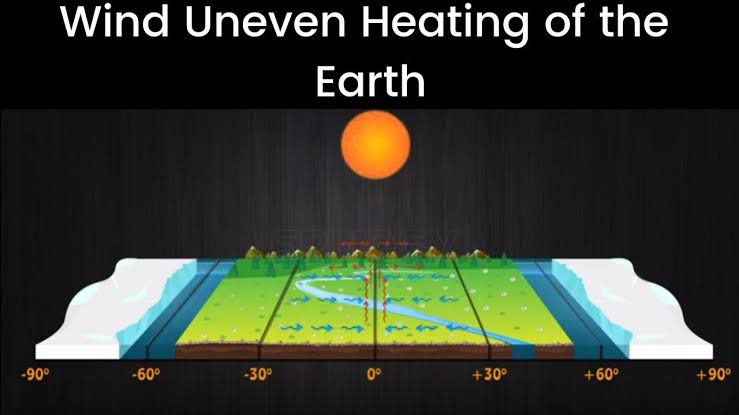- Books Name
- CBSE Class 7 Science Book
- Publication
- Param Publication
- Course
- CBSE Class 7
- Subject
- Science
Wind currents :
Wind currents are formed due to uneven heating of the earth. Two situations may arise :
1. Uneven heating between the equator and the pole
The equator, which receives the direct rays of the sun throughout the year, is the hottest part of the earth. The air above the equator gets heated (hence, becomes lighter) and rises.
This makes cooler, denser air from the tropical belts blow in towards the equator from the north to south. These permanent winds are called the north-east and south-east trade winds.
The rotation of the earth makes these winds blow in an eastern direction rather than straight north and south. Wind flow pattern due to uneven heating between the equator and the pole.
2. Uneven heating of land and water :
Originally, the seasonal winds that bring rain to India and the other countries of South Asia between June and September are called monsoon.
The word monsoon was derived from the Arabic word ‘mausam’ which means weather. In summer, the landmass of northern India becomes much hotter than the surrounding seas.
The hot air rises and moist air blows in from the Arabian Sea and Bay of Bengal. These moisture-laden winds bring heavy rainfall in most parts of India, are called the summer monsoon.
In winter, the direction of the wind flow gets reversed, it flows from the land to the ocean. These winds are called the winter monsoon. They pick up moisture as they blow over the Bay of Bengal and bring rainfall to coastal Tamil Nadu.
Wind currents are generated due to uneven heating on the earth

Wind currents are produced due to the non-uniform heating of the Earth. That means uneven heating at the equator and the poles. This warm air rises and the making up of cooler air from the regions with the 0-30 degrees latitude belt on either side of the equator moves in. This is how wind currents are being generated.
Current winds bring up air from one type of climate to the other. Suppose let warm winds that travel above water tend to collect moisture as they travel, then the water vapour in the air gets to be condensed as it moves into colder climates. This is why temperate coastal areas are frequently receiving heavy rainfalls.

 Param Publication
Param Publication
 Grow Career Publication
Grow Career Publication
